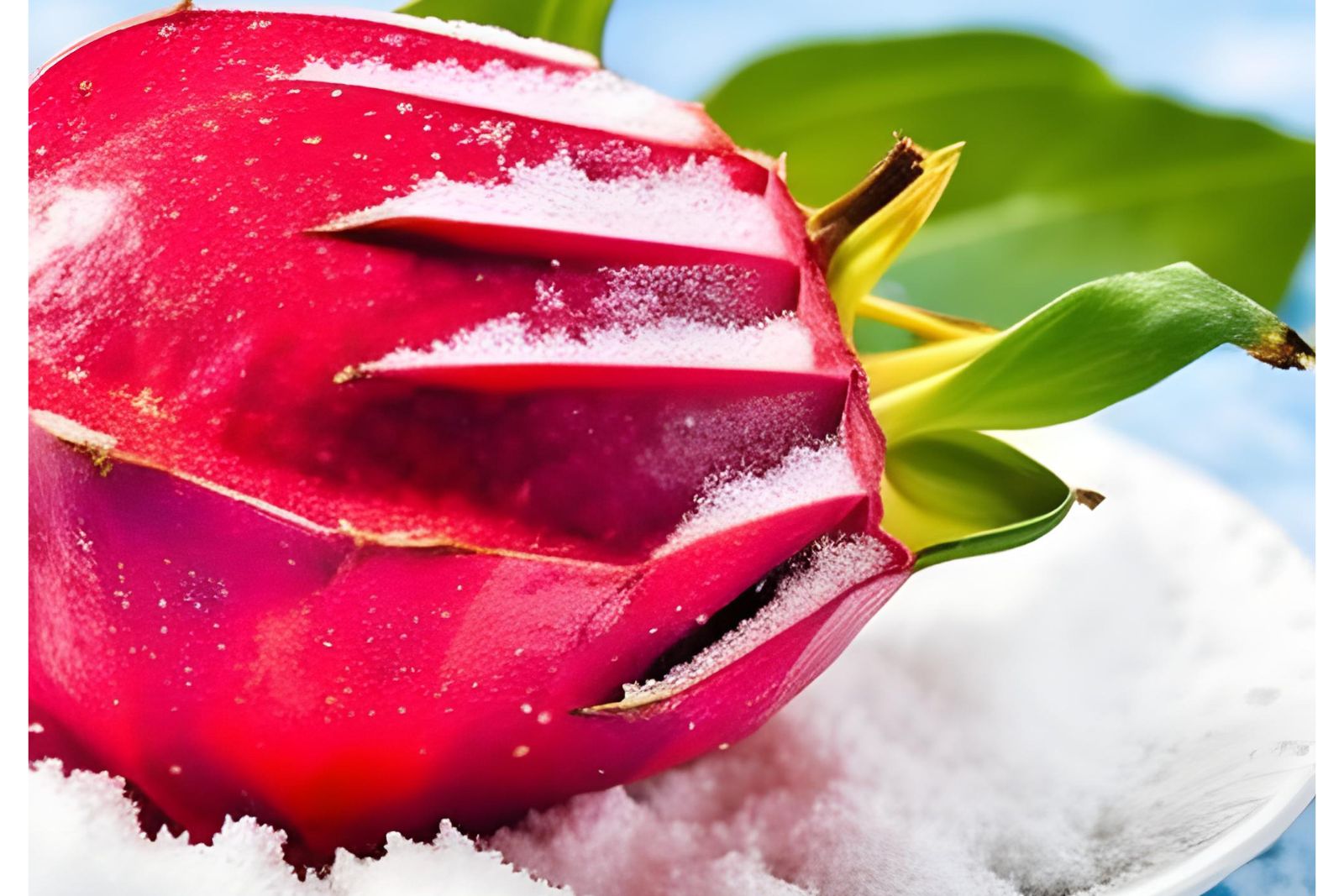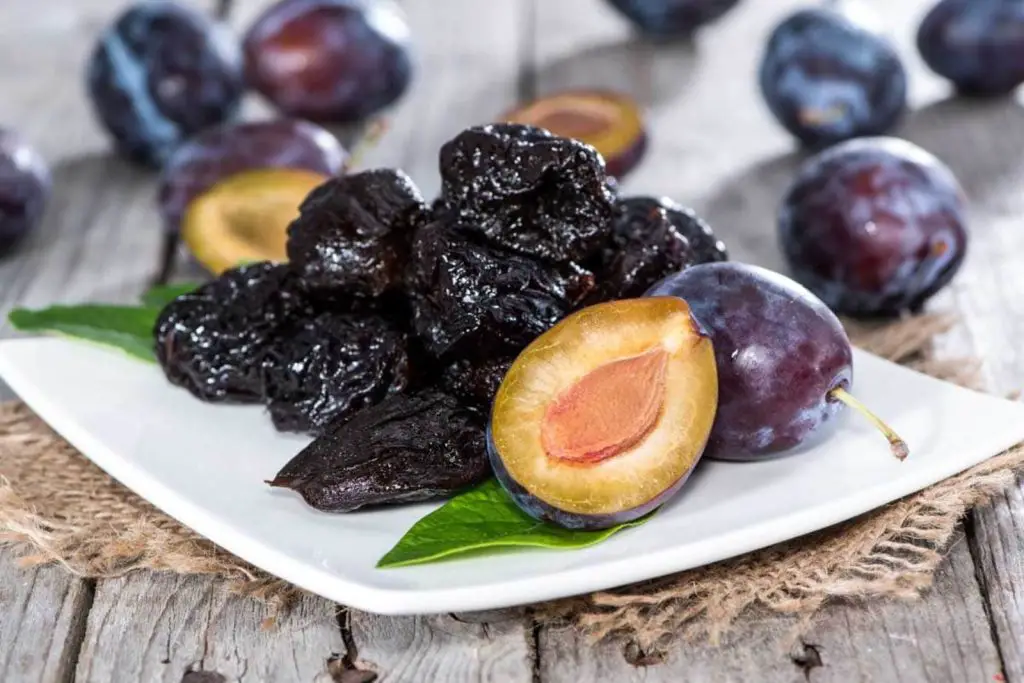
Dragon fruit, also known as pitaya, is a visually striking tropical fruit renowned for its vibrant colors and unique appearance. With its vibrant pink or yellow skin and speckled flesh dotted with tiny black seeds, dragon fruit is as visually captivating as it is delicious. This exotic fruit has a subtly sweet and refreshing flavor, often compared to a cross between a pear and a kiwi. Dragon fruit is often enjoyed fresh, added to fruit salads, and smoothies, or used as a garnish. If you have a surplus of dragon fruit or want to prolong its shelf life, freezing can be a convenient method to preserve its taste and enjoy it beyond its peak season. In the following section, we will explore the process of freezing dragon fruit and provide tips for maintaining its texture and flavor after thawing.
Here is a step-by-step guide on how to freeze dragon fruit:
Step 1: Prepare the dragon fruit
To begin the process of freezing dragon fruit, it’s crucial to start with ripe fruits that are firm and have a vibrant skin color. Choosing the right dragon fruits will ensure that you freeze them at their peak freshness and flavor. Here’s why the preparation step is essential:
- Selecting ripe dragon fruits: Look for dragon fruits that are slightly soft to the touch but not mushy. Ripe fruits will have bright and vibrant skin color, usually in shades of pink, red, or yellow, depending on the variety. Avoid dragon fruits with blemishes, mold, or signs of spoilage.
- Washing the fruits: Before freezing, it’s important to wash the dragon fruits thoroughly under cool running water. This step helps remove any dirt, debris, or chemical residues that may be present on the skin. By cleaning the fruits, you ensure that no unwanted substances end up in your frozen dragon fruit.
- Patting them dry: After washing, gently pat the dragon fruits dry with a clean kitchen towel or paper towel. Removing excess moisture helps prevent the formation of ice crystals during the freezing process. Ice crystals can affect the texture and quality of the fruit when thawed.
Step 2: Cut the dragon fruit
After preparing the dragon fruit, the next step is to cut it into manageable pieces. This allows for easier handling and storage during the freezing process. Here’s why cutting the dragon fruit is important:
- Slicing the fruit in half: Start by using a sharp knife to slice the dragon fruit in half lengthwise. This reveals the inner flesh, which is typically white or magenta in color and filled with small black seeds. Cutting the fruit in half makes it more accessible for further preparation.
- Scooping out the flesh: Once the dragon fruit is halved, gently scoop out the flesh from the skin using a spoon. The flesh is soft and easily separable from the skin. By removing the flesh, you eliminate the tough outer skin and focus on preserving the delicious and juicy part of the fruit.
- Alternatively, peeling and dicing: Another method is to peel the skin off entirely and dice the fruit into bite-sized pieces. This approach is suitable if you prefer smaller portions or plan to use the dragon fruit in specific recipes where diced fruit is more convenient.
Remember to use a sharp knife and handle it safely while cutting the dragon fruit. With this step completed, you are ready to move on to the next stage of the freezing process, ensuring that your dragon fruit remains fresh and flavorful even after freezing.
Step 3: Arrange the dragon fruit on a baking sheet
Once you have cut the dragon fruit into desired portions, the next step is to arrange them on a baking sheet. This step is important to ensure that the individual pieces freeze separately and do not stick together. Here’s why arranging the dragon fruit on a baking sheet is necessary:
- Using a baking sheet: Select a baking sheet that is large enough to accommodate all the dragon fruit pieces in a single layer. The baking sheet provides a flat surface for the fruit to rest on during freezing and makes it easier to transfer them to containers or bags later.
- Lining with parchment paper or a silicone mat: Line the baking sheet with parchment paper or a silicone mat. This prevents the dragon fruit from directly touching the surface of the baking sheet, which can cause sticking. The parchment paper or silicone mat also makes it easier to remove the frozen fruit without any hassle.
- Ensuring space between the pieces: Place the dragon fruit pieces on the baking sheet, ensuring they are not touching each other. Leaving some space between the fruit prevents them from freezing together into a solid mass. This allows for easy portioning and usage when you take out the frozen dragon fruit later.
This way, you can easily take out the desired amount of frozen dragon fruit without having to thaw the entire batch.
Step 4: Flash freeze the dragon fruit
Once you have arranged the dragon fruit pieces on a baking sheet, the next step is to flash-freeze them. Flash freezing involves quickly freezing the individual fruit pieces to maintain their quality and prevent them from clumping together. Here’s why flash freezing is beneficial:
- Placing the baking sheet in the freezer: Carefully transfer the baking sheet with the dragon fruit to the freezer. Make sure it is placed on a flat surface to ensure even freezing. The freezer’s low temperature will rapidly freeze the dragon fruit pieces.
- Freezing for 2 to 3 hours or until firm: Allow the dragon fruit to freeze for about 2 to 3 hours or until the fruit becomes firm to the touch. The exact freezing time may vary depending on the size and thickness of the fruit pieces, as well as the efficiency of your freezer. It’s important to monitor the freezing process to achieve the desired firmness.
- Prevent clumping: Flash-freezing the dragon fruit individually on the baking sheet prevents the pieces from sticking or clumping together. The quick freezing process solidifies the fruit while maintaining the separation between individual pieces. This makes it easier to portion and use the frozen dragon fruit later without having to thaw the entire batch.
Flash-freezing the dragon fruit ensures that each piece retains its individuality, texture, and flavor. It also preserves the overall quality of the fruit by minimizing the formation of ice crystals, which can negatively impact the taste and texture when thawed.
Step 5: Transfer the dragon fruit to a freezer-safe container
After flash-freezing the dragon fruit pieces on the baking sheet, it’s time to transfer them to a suitable container for long-term storage in the freezer. Proper packaging ensures that the frozen dragon fruit remains protected from freezer burn and maintains its quality. Here’s why transferring the dragon fruit to a freezer-safe container is important:
- Removing the baking sheet: Take out the baking sheet with the frozen dragon fruit from the freezer. Allow it to sit at room temperature for a few minutes to make the fruit easier to handle and prevent any potential sticking.
- Selecting freezer-safe containers or bags: Choose airtight freezer-safe containers or resealable freezer bags for storing the dragon fruit. These containers are specifically designed to withstand freezing temperatures and prevent air and moisture from entering, which can cause freezer burn and deteriorate the quality of the fruit.
- Transferring the dragon fruit: Gently transfer the frozen dragon fruit pieces from the baking sheet into the containers or bags. Be careful not to crush or damage the fruit during this process.
- Removing excess air: Before sealing the containers or bags, ensure that you remove as much excess air as possible. Excess air can contribute to freezer burn and affect the texture and taste of the fruit. Press the bags or containers gently to release any trapped air before sealing them tightly.
Proper packaging and sealing of the frozen dragon fruit help to maintain its freshness, color, and taste for an extended period. It also makes it easier to organize and store the fruit in the freezer, ensuring easy access and minimal wastage when you need to use the dragon fruit in the future.
Can I freeze dragon fruits in a glass container?
While glass containers are generally safe for freezing, they have some considerations when it comes to freezing dragon fruits. Glass containers may be prone to cracking or breaking due to the expansion that occurs when liquids freeze. It’s important to use freezer-safe glass containers that are specifically designed to withstand freezing temperatures and leave enough headspace for the fruit to expand during freezing.
Step 6: Label and date the containers
After transferring the frozen dragon fruit to freezer-safe containers or bags, it’s important to label them with the date of freezing. Properly labeling the containers ensures that you can keep track of the storage duration and use the frozen dragon fruit within the recommended time frame. Here’s why labeling and dating the containers is essential:
- Tracking storage duration: By labeling the containers with the date of freezing, you establish a reference point for how long the dragon fruit has been in the freezer. This helps you keep track of its storage duration and ensures that you use the fruit within the recommended time frame for the best quality and taste.
- Storage lifespan: Frozen dragon fruit can typically be stored for up to six months without significant deterioration in flavor and texture. However, it’s important to note that the exact storage lifespan may vary depending on factors such as the initial quality of the fruit, freezer conditions, and packaging methods. Labeling the containers allows you to monitor the storage time and ensure that the fruit is consumed within its optimal period.
- Inventory management: Labeling the containers with the freezing date helps with inventory management. You can easily identify and organize your frozen dragon fruit based on its freezing dates, allowing you to prioritize the use of older batches before newer ones. This ensures that the fruit is consumed in a timely manner and reduces the chances of any wastage.
Using a permanent marker or label, write the date of freezing on each container or bag. Make sure the label is clear and easily readable. You can also include any additional information, such as the quantity or type of dragon fruit, if necessary.
Step 7: Store the dragon fruit in the freezer
After labeling and dating the containers or bags of frozen dragon fruit, it’s time to store them in the freezer. Proper storage is crucial to maintain the quality, flavor, and texture of the fruit over an extended period. Here’s why storing the dragon fruit correctly is important:
- Placing in a flat position: When placing the labeled containers or bags in the freezer, ensure they are positioned flat. This prevents the dragon fruit from getting squished or damaged by other items in the freezer. It also helps maintain the individual shape and integrity of the fruit pieces.
- Freezer storage duration: Frozen dragon fruit can typically be stored in the freezer for several months without significant loss of quality. However, it’s important to note that the fruit’s texture and flavor may gradually deteriorate over time. To enjoy the best taste and texture, it is recommended to consume the frozen dragon fruit within six months from the date of freezing, although it may still be safe to eat beyond that timeframe.
- Protection from freezer burn: Proper storage in airtight containers or bags, along with labeling and dating, helps protect the frozen dragon fruit from freezer burn. Freezer burn occurs when moisture is lost from the fruit, leading to dry and discolored patches. By ensuring a tight seal and maintaining a consistent cold temperature, you can prevent freezer burn and preserve the fruit’s quality.
Remember to maintain a consistent temperature in your freezer and avoid frequent thawing and refreezing, as it can impact the quality of the fruit. When you’re ready to use the frozen dragon fruit, simply remove the desired amount from the freezer and thaw it according to your preference.
By following these steps and storing the dragon fruit appropriately, you can enjoy the taste of this exotic fruit year-round and make the most of its vibrant flavor and nutritional value.
What is the ideal freezing temperature for freezing dragon fruits?
The ideal freezing temperature for dragon fruits is below 0 degrees Celsius or 32 degrees Fahrenheit. Freezing the fruit at this temperature ensures that it is kept at a consistently cold state, preserving its quality and minimizing the risk of bacterial growth. Maintaining a proper freezing temperature is essential for preserving the taste, texture, and nutritional properties of the dragon fruit during storage.
Other related questions
How can I properly defrost dragon fruit?
Properly defrosting dragon fruit is important to preserve its texture and flavor. To defrost dragon fruit, remove the desired amount from the freezer and transfer it to the refrigerator. Allow the fruit to thaw slowly in the refrigerator for several hours or overnight. Avoid using heat or hot water to speed up the thawing process, as it can affect the fruit’s quality. Once thawed, the dragon fruit can be enjoyed as is or used in various recipes and preparations.
How long can you freeze dragon fruit?
Dragon fruit can be frozen for up to six months without significant loss in quality. However, it’s important to note that the exact freezing duration can depend on factors such as the initial freshness of the fruit and the efficiency of your freezer. Proper packaging and storage conditions, including airtight containers or freezer bags, help maintain the fruit’s quality over time. It’s recommended to label and date the containers or bags to keep track of the freezing date and ensure timely consumption for the best taste and texture. Freezing dragon fruit beyond six months may still be safe, but there may be a gradual decline in flavor and texture.
Can I refreeze dragon fruits that have been previously thawed?
It is generally not recommended to refreeze dragon fruit that has been previously thawed. Each time you freeze and thaw the fruit, it undergoes changes in texture and quality. Refreezing can further compromise its taste and texture, resulting in a less desirable eating experience. To avoid wastage, it’s best to thaw only the amount of dragon fruit you intend to use and consume it within a reasonable time frame. Proper portioning and planning can help minimize the need for refreezing and ensure the best quality of the fruit.
How do I know if my frozen dragon fruits have gone bad?
To determine if your frozen dragon fruits have gone bad, start by examining their appearance. If there are signs of freezer burn, such as discoloration or dry, shriveled patches, it indicates deterioration. Next, assess the texture of the fruit. If it has become excessively mushy or has developed an unusual texture, it may be an indication of spoilage. Additionally, pay attention to any off smells emanating from the frozen dragon fruit. A foul or rancid odor suggests that the fruit has gone bad. Lastly, trust your taste buds. If the flavor is off, unpleasant, or significantly different from fresh dragon fruit, it’s best to discard it to avoid consuming spoiled fruit.
Can I use frozen dragon fruits with fresh ones?
Yes, you can use frozen dragon fruits alongside fresh ones in various ways. Frozen dragon fruit can be a convenient addition to smoothies, desserts, or fruit bowls. It can add vibrant color and a refreshing taste to your creations. Mixing frozen and fresh dragon fruit allows for a balance between the convenience of frozen fruit and the freshness of the fresh ones. Experiment with different combinations to enjoy the best of both worlds and create visually appealing and delicious dishes.
Is it necessary to blanch dragon fruit before freezing?
No, it is not necessary to blanch dragon fruit before freezing. Blanching is a technique commonly used for vegetables to help retain their color, texture, and nutritional value during freezing. However, dragon fruit does not require blanching as it retains its quality well without this step. Simply preparing and freezing the fruit as recommended, without blanching, will suffice to preserve its taste and texture.
Will freezing affect the taste and texture of dragon fruit?
Freezing can affect the texture of dragon fruit, causing it to become slightly softer or mushier upon thawing. However, the overall taste of the fruit remains relatively unchanged. While the texture may be altered, frozen dragon fruit still retains its unique flavor and can be enjoyed in various preparations, such as smoothies, desserts, or as a topping. Proper storage and thawing techniques can help minimize any potential negative effects on texture, ensuring a pleasant eating experience.
Does freezing dragon fruit affect its nutritional value?
Freezing dragon fruit does not significantly affect its nutritional value. The fruit is rich in antioxidants, vitamins, and fiber; these nutrients remain intact even after freezing. However, it’s worth noting that the texture and taste of the fruit may be slightly different after freezing, so it’s best to use it in smoothies, purees, or sauces rather than eating it fresh. Additionally, it’s important to freeze dragon fruit at its peak ripeness to ensure maximum nutritional value.








